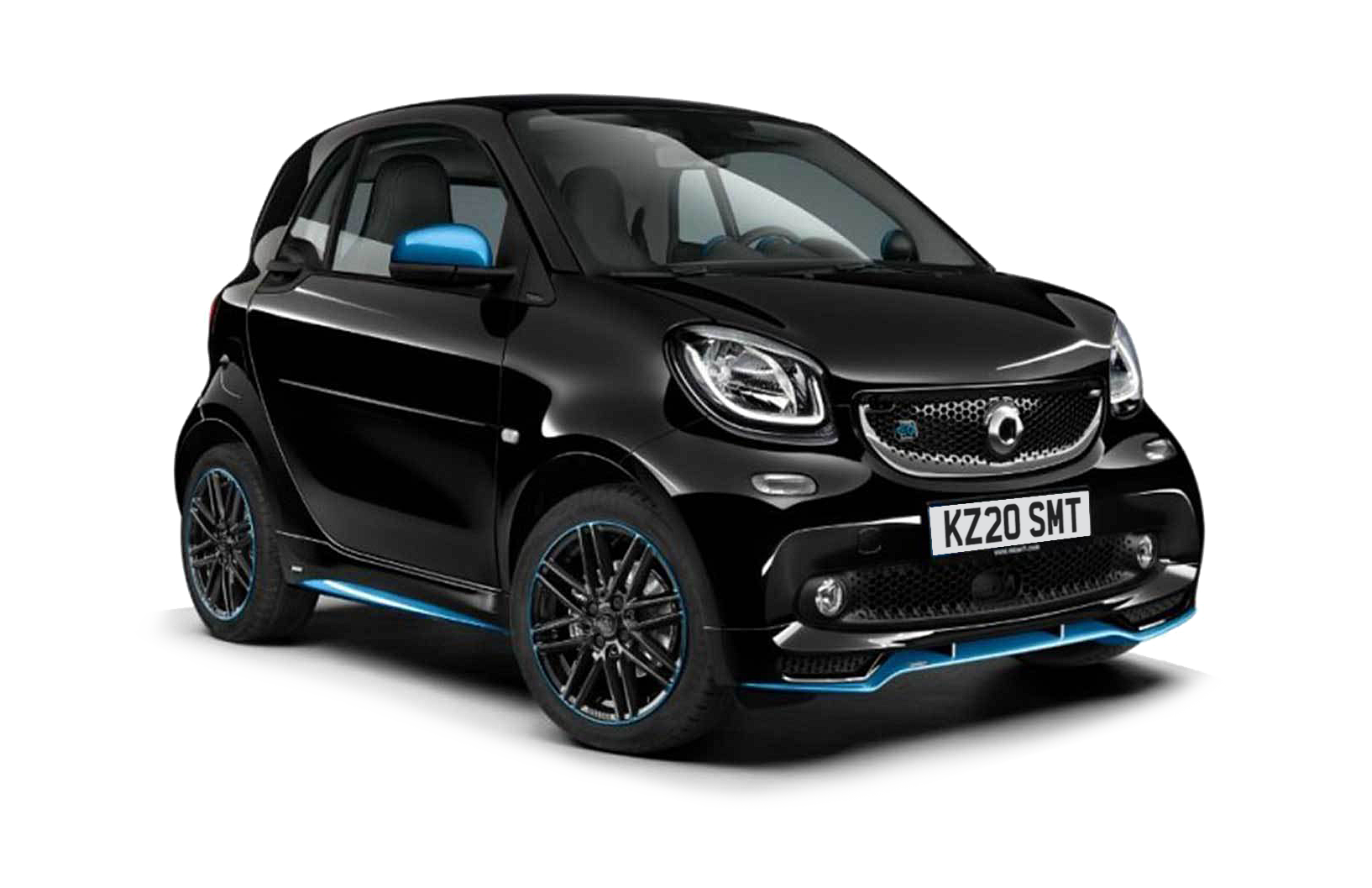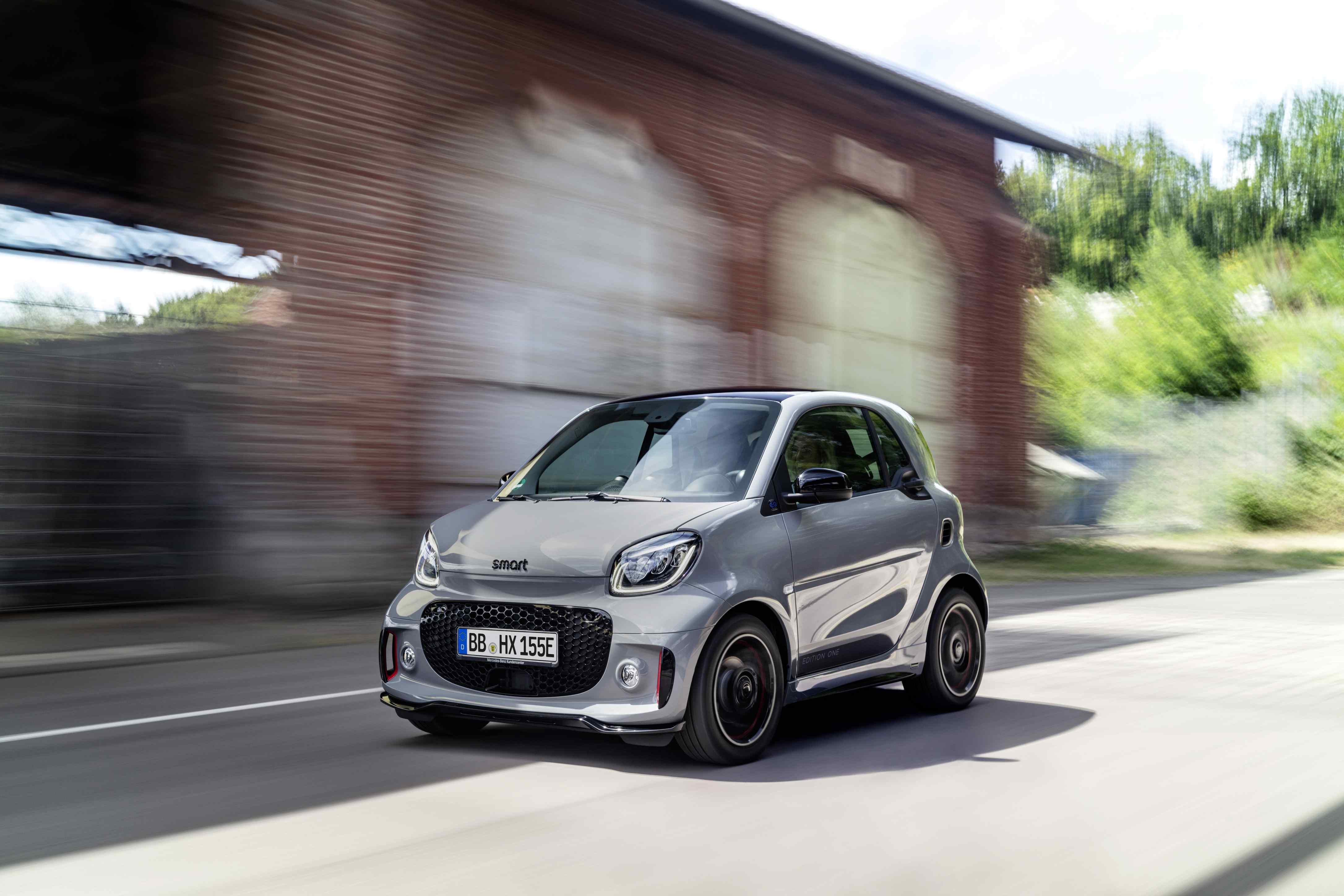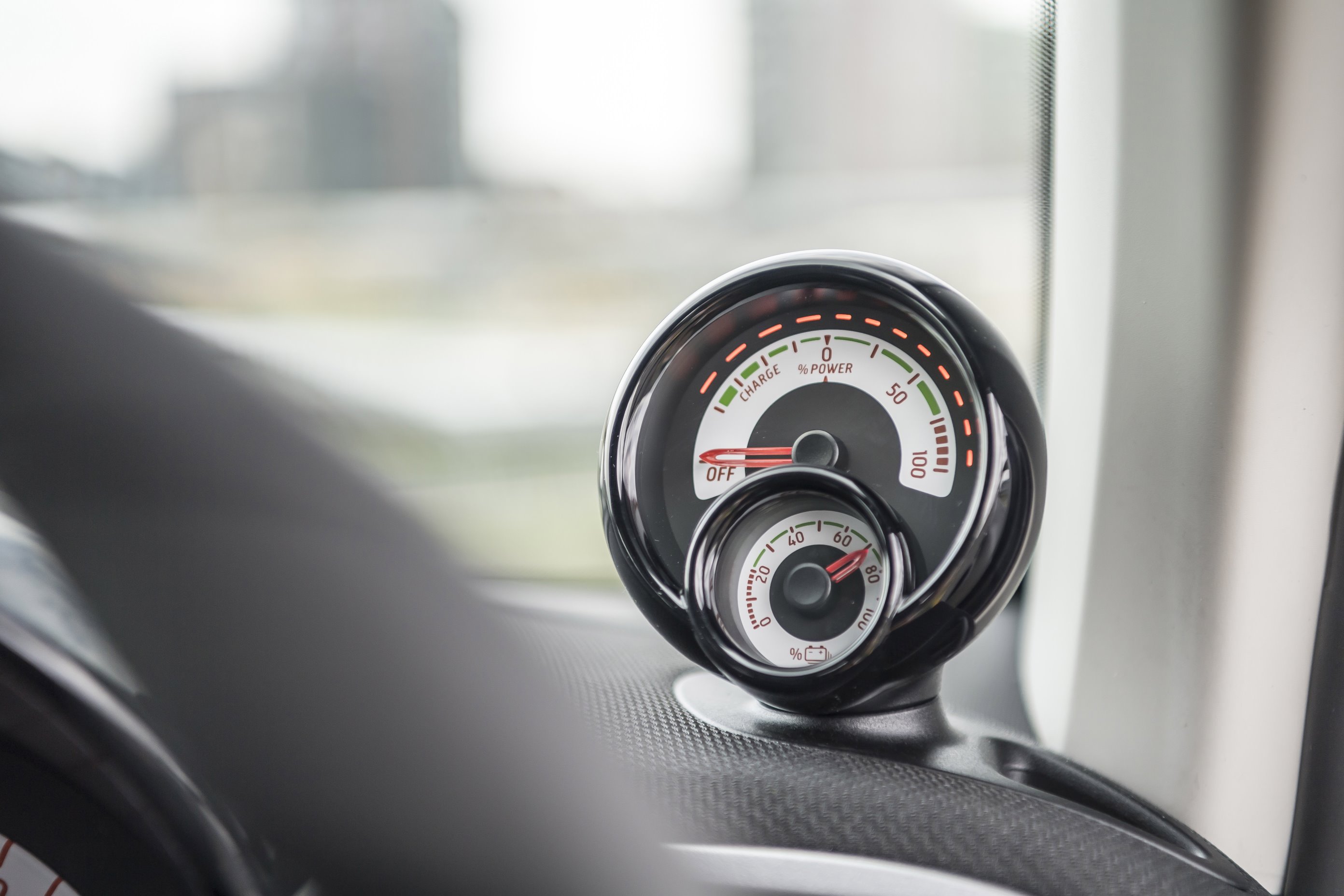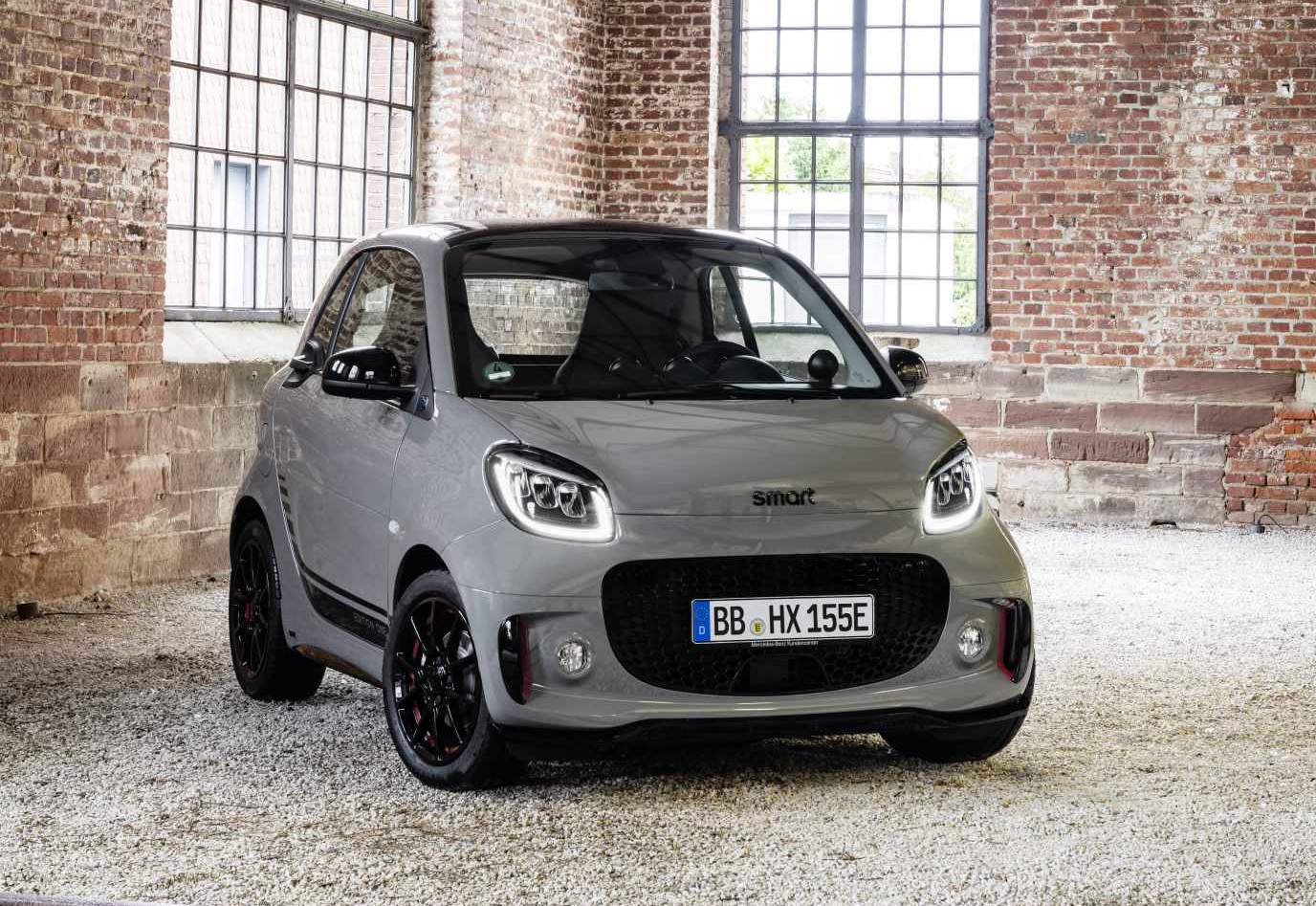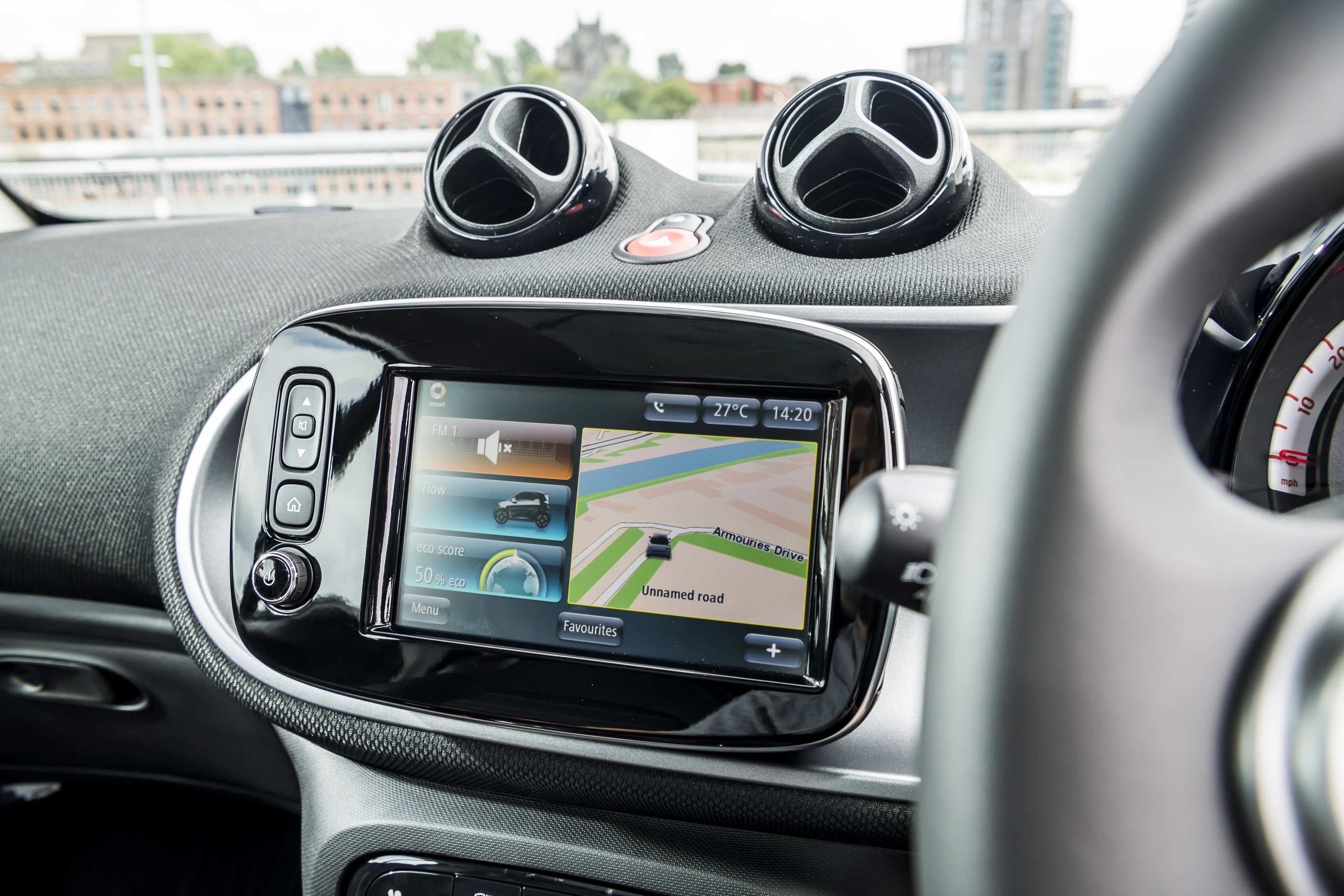For a time in the Noughties, it looked like the smart money was very definitely on Smart. Taken under the wing of the mighty Mercedes-Benz early on in its life, the brand brought us an extraordinarily clever little hatchback that was a seemingly perfect fit for our increasingly jam-packed cities. Peppy and ultra-economical, the compellingly unconventional Smart ForTwo was a marvel of space efficiency, comfortably accommodating two adults within a Start-Rite footprint that meant it was capable of slotting into parking spaces other cars would need several shoehorns for. It quickly became the talk of the town, helped by clever marketing and canny packaging embellished by a kaleidoscope of jazzy colour combinations aimed squarely at young and hip urbanites.
As the world’s motorists gradually began to get their collective head around the concept of eschewing a petrol or diesel engine in favour of an electric motor, the Smart seemed like a shoo-in to be an early adopter of the technology. It did just that in 2007, but the fledgling electric versions with their relatively crude and unpredictable Ni-Cad batteries were famously flawed and should be given a very wide berth indeed!
Later models with lithium-ion battery power make a lot more sense, though, and as well as the classic ForTwo format also offer the choice of cabriolet and larger four-seater ForFour options. All have one key feature in common, and that’s a battery that by modern standards is unusually small and gives rise to a driving range that makes only a very half-hearted attempt to nudge three figures.
Smart has seemingly been resting on its laurels recently, and despite a pretty fruitful range facelift in 2020 during which it also pledged to can all its combustion-engine variants, its cars could justifiably be described as a little ‘off the pace’ these days. Now part-owned by Chinese automotive giant Geely, it looks set to address that with new models from next year, but don’t dismiss the existing ones. If you tend to stay comfortably within city limits and can charge at home and/or at work without too much rigmarole, the Smart ‘Electric Drive’ or ED models remain pretty viable to this day as uncommonly cost-effective transport with a remarkably light environmental touch. With decent examples available for as little as £7,500, they’re definitely worth a look at least, so read on and find out if you could live with one…
Prices
Opt for a new electric Smart, now rebranded as Smart EQ, and you’ll still be driving one of the cheapest electric cars available today – prices start from £21,700 for the entry level ‘premium’ model, but once the Government’s existing Plug-in Car Grant (PICG) of £2,500 is deducted it ducks under £20K at £19,200. You don’t have to look far to find substantially discounted brand new models online as well, so if you’re an ardent Smart fan, have a degree of budget flexibility and crave that unadulterated new car feel you could come up trumps at the moment.
Alternatively, you could pick up a tidy 2013 ‘Electric Drive’ model with less than 10,000 miles to its name for under £10,000, or a slightly more seasoned example with 30K to 40K miles for closer to £8,000. Electric travel doesn’t come much cheaper than this, and if you can’t live without four seats and seek out the larger ForFour version you’ll find prices don’t head much further north, although you may have to accept a marginally higher mileage for your money.
The most keenly priced electric ForTwos on the market are based on the second-generation Smart launched in 2007, which we’ll call the Mk2. It was produced until 2014, and the ‘Electric Drive’ versions caught the tail end of this generation, arriving in 2013. They were widely regarded as the pick of that particular bunch, largely due to their smoother single-speed automatic transmission, keener performance and throttle response and marginally more composed ride and handling.
At this stage, their batteries could be leased for a monthly fee as a means of lightening the initial load on the buyer’s wallet (which was almost double what a ‘standard’ Smart would impose), and providing extra reassurance in the event of a failure. As a result, it’s definitely worth going through the background of any earlier models with a particularly fine-toothed comb to check for any financial skeletons in the closet.
Electric Drive versions had a standalone specification that from the outset included trimmings such as air conditioning, navigation, electric windows and Bluetooth connectivity, and also offered remote control of charging and other features via a handy smartphone app, so they never felt down-at-heel like some of the more basic combustion engine models. More recent electric Smarts, rebranded as ‘Smart EQ’, have adopted a similar trim structure to the conventionally powered models that have now fallen by the wayside, bringing ’premium’, ‘exclusive’ and chunkily body-kitted BRABUS versions.
Spotting a Smart ForTwo EQ (or ED)
Beyond the ‘electric drive’ or ‘EQ’ badging, there are few pointers to tell you you’re looking at an all-electric Smart, regardless of which generation catches your eye. In the classifieds you’ll find the electric models sporting a fairly typical assortment of Smart colour schemes, from the relatively subdued to the considerably more fluorescent two-tones with body sections in vivid blues, reds and greens. Although both generations have had nips and tucks during their lifecycles they’re essentially pretty easy to separate – the more recent model has a noticeably more rounded and bulbous shape, though it’s none the worse for that in our opinion.
Inside the second-generation car, additional pods on top of the dashboard containing a charge meter and a battery status readout are the key telltale signs that there’s an engine missing. The readouts also show how the energy that’s generated when you brake is being used to recharge the battery. In its successor, one dash-top pod and more sophisticated digital displays convey the necessary electric info.
In both, space for two adults is at far less of a premium than you might think – in fact, the ForTwo feels genuinely airy and comfortable by virtue of its ingenious packaging. As you might expect, things get considerably snugger in the boot, but let’s not forget this is a city car at heart, and in both models it’s sufficient for the odd boutique bag or grocery shop. Despite a just about passable infotainment system and convincing build quality the second-generation car’s cabin does have a rather utilitarian air, although it’s undeniably effective in a coolly Germanic way. Squishier plastics, slicker technology and a rather more cohesive design make the Mk3’s interior a nicer place to spend time, but modern-day competitors for your cash definitely feel a cut above.
Top tech
With its lightweight ‘interchangeable’ plastic body panels and virtually non-existent front and rear overhangs, you could be forgiven for thinking that the Smart ForTwo doesn’t offer much in the way of protective padding between you and the army of SUV behemoths that routinely patrol today’s towns and cities. Thankfully, though, it’s actually a lot more capable of locking horns with the big boys than it might appear, thanks to its high-tech Tridion steel safety shell, a hemispherical steel ‘cage’ encasing the interior and also forming the bulk of the chassis. In a car less than three metres long, that’s reassuring to know!
The Smart ForTwo’s electric motor is rear mounted and powers the rear wheels. With up to 80 bhp on tap it’s never going to scorch any asphalt, but the fact that it has precious little to haul around is reflected in a perfectly respectable 0-62mph time of around 11.5 seconds in both generations and a top speed of up to 81mph. Go-virtually-anywhere dimensions and an engagingly swift and responsive feel might make it hard to resist gamboling through town at a fair pace in the ForTwo, but we’d advise against too many traffic light Grand Prix, because the Smart’s 17.6 kWh battery manages a range that flirts with the idea of three digits but no more, so it needs to conserve its energy!
More than pretty much any other car on the road, the Smart is geared towards short-hop urban driving – the tiny dynamo might almost be manoeuvrable enough to thread through the eye of a needle, but plenty of other superminis are cleverly packaged to suit city streets, and offer the advantage of rear seats, more luggage space and, in electric form, a considerably longer driving range. Few, if any, are as cheap to run, though, so at the right used price the ForTwo could still just about stack up.
Fuel economy
At best, according to the NEDC test procedure, you’ll get up to 90 miles between charges in the Mk2, and up to 99 in its successor, although the latest 2021 ForTwo has subsequently undergone today’s more true-to-life WLTP test, and proved capable of 80-81 miles according to Smart’s own data. That distance was about par for the course in 2013 when the first production ForTwo Electric Drive made its debut, but the world has moved on, and in this area it seems this idiosyncratic little two-seater isn’t catching up with it particularly smartly.
You could argue that the ForTwo makes no bones about being a thoroughbred city car rather than a distance runner, and that as the average Brit’s daily commute is in the region of 20 miles it’s packing more than enough staying power to meet the needs of most townies. What is safe to say, though, is that there are considerably better all-rounders out there in a not too dissimilar budget ballpark, albeit arguably none that are as cheap to run on a daily basis, so you need to really admire that quirky Smart design concept and unmatched point-and-squirt urban agility to forsake some pretty impressive competition for it. There’s no denying plenty of people do, and we’re not judging!
What goes wrong?
In a car as comparatively simple and straightforward as the Smart you’d hope there wouldn’t be much that could go disastrously awry, and so it has proved. Most notably, in the earlier Mk2 model the lock for the tailgate had a tendency to give up the ghost, meaning that not only would it not latch properly, but the car also couldn’t be locked in its entirety until it was sorted. In 2014 a fault with a heater valve also posed a potential fire risk and was addressed by recalling 17,000 examples. Aside from dodgy rear window washer pipes which could cause leaks into the car and heater units that refused to blow cold air, necessitating a new control unit, there’s thankfully not much else to report for this version.
Hiccups in the third generation Fortwo are also few and far between. The ‘service flap’, or bonnet in old money, could become detached from the car on rare occasions, as, rather worryingly, could the locks if they were buffeted by a strong gust of wind on the move, although we understand the latter issue was addressed long before the electric model took to the road.
Charging
As well as keeping weight (relatively) in check and ensuring there’s no intrusion to speak of on the Smart’s every-centimetre-counts cabin design, the unusually small 17.6 kWh battery also has the advantage of being pretty quick to charge. A home wallbox charger will do the job in about three and a half hours. The more modern car is also available with the option of a 22 kW onboard charger that can cut the time to around an hour. Using Smart’s smartphone app, owners can schedule and manage charging to take advantage of cheaper off-peak power.
The ForTwo’s high voltage battery is covered by a respectable 8-year or 62,000-mile warranty. Given that these cars shouldn’t rack up astronomical mileages most on the market should fall well within these boundaries.
Summary
In theory, the electric Smart is exactly what drivers in overcrowded, heftily taxed and environmentally beleaguered Britain need. Aside from that saintliness when it comes to emissions, it’s extraordinarily space-efficient and cost-effective, acceptably well-equipped, and its dodgem-like character makes bobbing and weaving through town in one a pretty entertaining experience. What’s more, there’s even now a four-seat option so friends and family don’t have to resort to the bus.
Trouble is, there are plenty of hybrid and full-electric competitors with a broader breadth of ability available on the used market these days. Most offer more space, more battery range and a more rounded driving experience that isn’t so heavily weighted towards urban journeys.
If you’re set on switching to electric and buying and running costs are of paramount importance to you, then a Smart could still make sense as long as you can live with its well documented limitations. If you can find a Mk3 model that falls within your budget we would be inclined to go for that as it’s a more comfortable and grown-up package, but we’d strongly advise exploring other options like Skoda’s Citigo E, SEAT’s Mii Electric and Nissan’s Leaf before taking the plunge.










